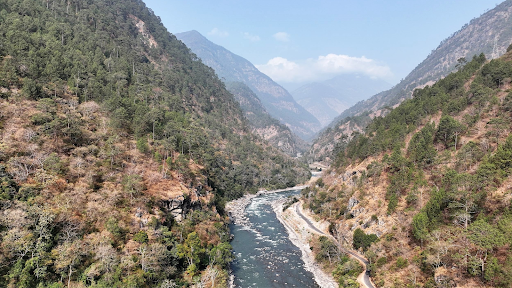



The Birhor tribe in Jharkhand, known as 'jungle people', have joined a movement against child marriage in Giridih, marking a significant shift towards cultural reform. The Birhor community, traditionally practicing subsistence economy through gathering and hunting, follows a blend of animism and Hinduism, reflecting their unique socio-economic and cultural identity within Jharkhand’s diverse tribal landscape.

Disclaimer: Copyright infringement not intended.
People belonging to the Birhor tribe, a particularly vulnerable tribal group in Jharkhand, have joined a movement against child marriage in Giridih for the first time.
|
Primary Region |
Indian state of Jharkhand; also found in Chhattisgarh, Orissa, and West Bengal. |
|
Name Meaning |
Birhor means 'jungle people'; bir = 'jungle', hor = 'men' |
|
Language |
Birhor language belongs to the Munda group of languages of the Austroasiatic language family. |
|
Similarities with Santali, Mundari, and Ho languages. |
|
|
Ethnology |
Short stature, long head, wavy hair, broad nose. |
|
Claim descent from the Sun; consider Kharwars as their brothers. |
|
|
Similar ethnologically to Santals, Mundas, and Hos. |
|
|
Economy |
Primitive subsistence economy based on nomadic gathering and hunting, particularly for monkeys. |
|
Make ropes from a specific species of vine, sold in agricultural markets. |
|
|
Some have settled into stable agriculture. |
|
|
Socio-economic Classification |
Uthlus (wandering Birhors) |
|
Janghis (settled Birhors) |
|
|
Beliefs |
Follow a mixture of animism and Hinduism. |
|
Munda |
One of the largest tribal communities in Jharkhand, known for their agricultural practices and traditional arts. |
|
Oraon (Kurukh) |
A significant tribe in Jharkhand, known for their distinct language and traditional beliefs, including worship of nature deities. |
|
Santhal |
The largest tribal group in Jharkhand, known for their unique culture, traditional dance, and the Santhal language. |
|
Ho |
An agrarian tribe, traditionally known for their worship of nature deities and cultural practices like the 'Sarhul' festival. |
|
Kharia |
One of the oldest tribal communities, practicing shifting cultivation and known for their rich cultural traditions. |
|
Bhumij |
Primarily found in Jharkhand, known for their agricultural practices and traditional crafts. |
|
Paharia |
Known as 'the mountain people,' they live in the hilly terrains of Jharkhand and are known for their distinct customs and traditions. |
|
Asur |
A small tribal community in Jharkhand, known for their agricultural practices and animistic beliefs. |
|
Kora |
A lesser-known tribe in Jharkhand, engaged in agriculture and known for their traditional practices. |
|
Mahli |
Primarily found in the eastern part of Jharkhand, known for their distinct music and dance forms. |
|
Kisan (Mali) |
A small tribal group in Jharkhand, traditionally engaged in agriculture and animal husbandry. |
|
Bedia |
Known for their traditional dance 'Jhumar' and are primarily found in the rural areas of Jharkhand. |
|
Koda |
A small, yet distinct tribal community in Jharkhand, known for their agriculture and animal husbandry practices. |
|
Uraon (Kurukh) |
Similar to Oraons, but primarily found in the eastern part of Jharkhand, known for their distinct cultural practices and rituals. |
|
Mankardha |
Found in the Chotanagpur region of Jharkhand, known for their agricultural practices and traditional music. |
|
Jharia |
A smaller tribal group, primarily engaged in agriculture and known for their traditional songs and dances. |
|
Karmali |
A tribal community in Jharkhand known for their distinct social customs and traditional crafts. |
Source:
|
PRACTICE QUESTION Q.Consider the following statement regarding Birhor tribe:
Which of the above statements is/are correct? (a) 1 only (b) 2 only (c) Both 1 and 2 (d) Neither 1 nor 2 Answer: c Explanation: Statement 1 is correct: The Birhor tribe is known as 'jungle people' and has traditionally practiced a subsistence economy through gathering and hunting. Statement 2 is correct: The Birhor tribe has joined a movement against child marriage in Giridih marking a significant cultural reform. |










© 2025 iasgyan. All right reserved